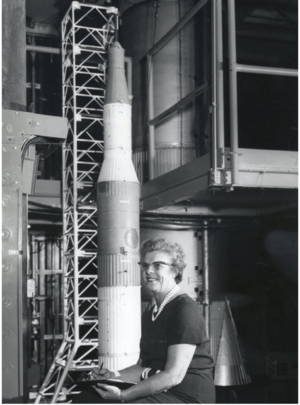Vera Huckel facts for kids
Quick facts for kids
Vera Huckel
|
|
|---|---|

Vera Huckel, 1966
|
|
| Occupation | Computer Aerospace engineer Mathematician |
| Employer | National Advisory Committee for Aeronautics National Aeronautics and Space Administration |
Vera Huckel was an important American engineer and mathematician. She was one of the first "computers" at NACA. This agency later became NASA, which is famous for space exploration.
At NACA and NASA, Vera Huckel worked mostly in the Dynamic Loads Division. This team studied how forces affect aircraft and spacecraft.
Contents
Who Was Vera Huckel?
Vera Huckel was a pioneer in the early days of space and flight research. She helped develop new ways to understand how planes fly. Her work was very important for making aircraft safer and more efficient.
Early Work as a "Computer"
In the past, a "computer" was a person who did complex math calculations by hand. Vera Huckel was one of these skilled human computers. She performed many difficult equations for NACA. This was before electronic computers were common.
Programming NASA's First Electronic Computer
Vera Huckel played a key role in the early days of electronic computing. She wrote the program for NASA's very first electronic computer. This was a huge step forward for scientific research. It allowed for much faster and more complex calculations.
Becoming an Engineer and Mathematician
As technology advanced, Vera Huckel's role grew. She became a supervisory mathematician and an aerospace engineer. This meant she led teams and designed parts of aircraft. Her skills helped solve tough problems in flight.
Studying Sonic Booms
As a mathematician, Vera Huckel helped test sonic booms. A sonic boom is a loud noise. It happens when an aircraft flies faster than the speed of sound. This creates a shockwave, like a boat moving through water. Her work helped engineers understand these powerful effects.
Retirement
Vera Huckel retired from NASA in 1972. She left behind a legacy of important contributions. Her work helped shape modern aerospace engineering.

